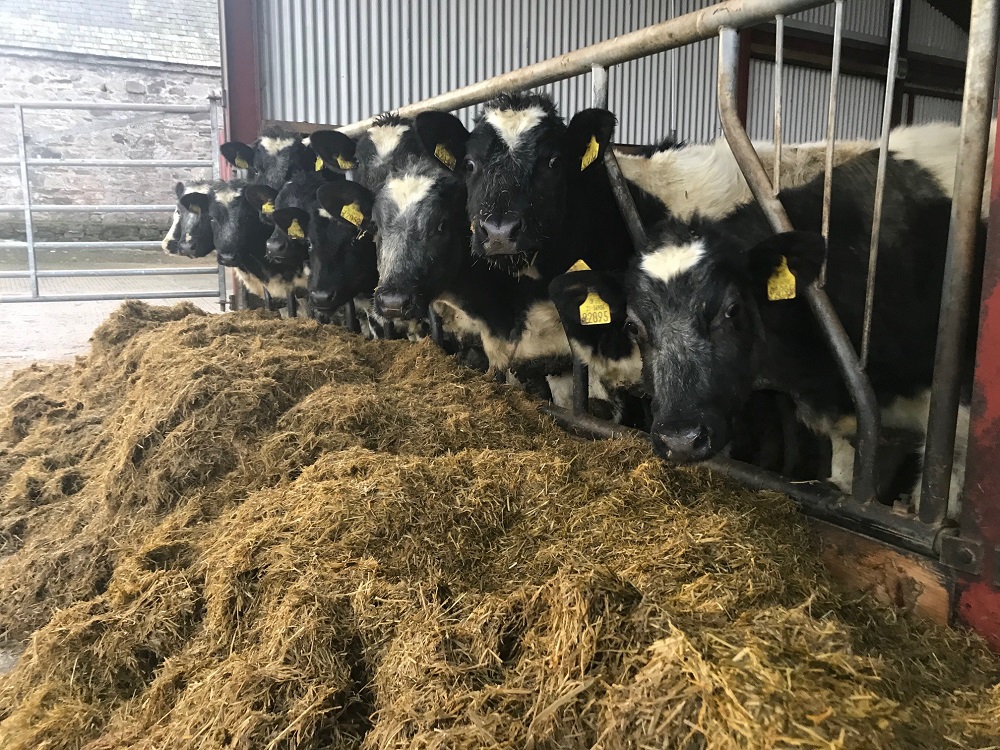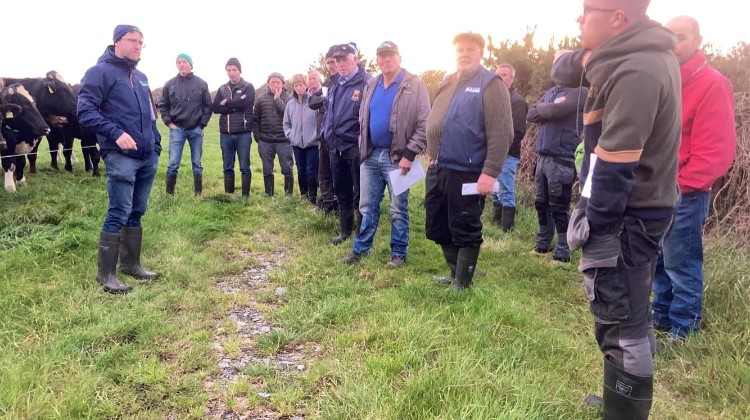DairyBeef 500 Newsletter November 2022
Ensuring winter performance | Lice treatment | DairyBeef 500 Discussion Groups
Ensuring winter performance
With the clock having gone back and the heavy rainfall over the past few weeks, the winter is well and truly in on the majority of farms throughout the country. Rising input costs over the past 12 months means farmers will feel the pinch this winter. DairyBeef 500 farmers are aware they cannot afford to cut corners over this period and that achieving an adequate level of weight gain over the course of winter months is crucial. This will ensure the good results achieved over the summer months are not undone.
The target over winter months is at least 0.6kg/day for steer and heifer weanlings and 0.9kg/day for finishing heifers and over 1kg/day for steers. These weight gains are being achieved consistently on the DairyBeef 500 farms. Below are some of the main areas for farmers to focus on to ensure performance is maintained.
Silage analysis
Nationally, silage quality of around 65% dry matter digestibility (DMD) has been the norm. This silage is only capable of supporting a daily live weight of 0.3-0.4kg/day for stock without the inclusion of meal. Completing silage analysis is critical to ensure that the nutritional requirements of stock are met and that the desired level of performance is achieved over the winter. Visual assessment alone is not adequate to determine silage quality. A laboratory test will provide accurate information on silage nutritive value and preservation and allow informed concentrate feeding decisions to be made.
Silage samples must be taken carefully to ensure correct results. A period of 5-6 weeks should elapse between ensiling and sampling. A long core sampler should be used with 3-5 cores taken from well-spaced points on or between diagonals on the pit surface. Alternatively sample an open pit by taking nine grab samples in a ‘W’ pattern across the pit face. When testing bales, a number of samples from each batch are needed to get a representative sample.
Table 1: Guideline daily feeding rates based on silage quality (DMD)
| Animal type | Target ADG | 66 DMD | 68 DMD | 70 DMD | 72 DMD | 74 DMD |
|---|---|---|---|---|---|---|
| Weanling | 0.6kg/day | 1.8kg | 1.5kg | 1.2kg | 0.9kg | 0.4kg |
| Finishing steer | 1kg/day | 7.0kg | 6.0kg | 5.5kg | 5.0kg | 4.0kg |
| Finishing heifer | 0.9kg/day | 7.0kg | 6.0kg | 5.5kg | 5.0kg | 4.0kg |
Lying and feeding space
Adequate lying and feeding space is important to ensure animal performance over the winter months. Animals should be housed with comrades of similar size and weight to avoid bullying in the pen and at feeding. Table 2 and 3 look at the ideal lying and feed space required for the different groups of stock housed in slatted accommodation over the winter.
Table 2: Lying space allowances (m2/animal)
| Animal type | Space allowance |
|---|---|
| Suckler cows | 2.5-3.0 |
| >275kg | 2.0-2.5 |
| <275kg | 1.2-1.5 |
Table 3: Recommended feed space allowances (mm/head)
| Feedstuff | Finishing cattle | Light store cattle | Weanlings |
|---|---|---|---|
| Ad-lib roughage | 400-500 | 250-300 | 225-300 |
| Restricted roughage | 600-650 | 500-600 | 400-500 |
| Concentrates | 600-650 | 500-600 | 400-500 |
Water
Access to clean, fresh drinking water is every bit as important as good quality silage or any dosing programme. Cattle have a huge need for water while housed. Water troughs should be checked daily and if there is any sign of any soiling with either animal waste or feed, they must be cleaned immediately. Where high levels of meal are fed, larger water troughs are a better option as opposed to bowl drinkers as demand for water increases with meal feeding.
Lice treatment – failure to treat can adversely affect weight gain
Lice treatment is usually carried out at housing but repeat treatment is necessary in many cases. Lice infestations left untreated have the potential to significantly reduce weight gain in finishing cattle, in what is an expensive time in a finishing animal’s life.
There are basically two types of products used in the control of lice. You have the: pour-on synthetic pyrethroids; and injectable or pour-on ivermectins. Injectable and pour-on products can be used to manage mites and sucking lice, but only pour-on products are effective against biting lice. The pour-on products will disperse throughout the fat layer, which is how they become effective against biting lice, as they do not ingest blood.
For pour-on products, correct administration is key to effective control. If using a pour on to control lice, it is generally best to clip the backs of cattle. It is also important not to under dose. Lice spread very readily between cattle and the main route of transmission is by direct contact, so all contact animals should be treated at the same time. It is also important to treat any bought-in animals before they are let join any groups of housed cattle that have been already treated.
Cattle should be checked two to three weeks after the initial treatment just to make sure they are not showing signs of infestation. The reason you may have to treat again after two to three weeks is to kill off any lice that have hatched from eggs since your last treatment.

Benefits of joining a DairyBeef 500 discussion group
Knowledge transfer between advisors and farmers is the core element of the DairyBeef 500 Campaign. Discussion groups will be one of the main channels used for transferring the main messages of operating a successful dairy calf to beef enterprise.
Currently discussion groups are being formed across all Teagasc advisory regions for those who are operating or those planning on implementing a dairy calf to beef enterprise on their farm. The groups will be delivered by the Teagasc team of advisors and specalists, and will focus on important aspects of farm management such as: calf rearing; grassland management; financial management; animal health; labour and time management; animal nutrition; animal performance; as well as any other important aspects of running a successful dairy calf to beef enterprise.

Once established, groups will meet 6-7 times annually. The local Teagasc DairyBeef 500 demonstration farms will be used initially during the group start-up phase and then the group will expand to other member farms, as well as the opportunity to visit some of the dairy calf to beef research farms.
These groups will give farmers the opportunity to share ideas, solve problems and acquire technical expertise. A timetable/schedule of the dates, venues and topics for the discussion group will be developed at the start of the year and this will provide a platform for the group for the year. While on farm meetings will be the primary mode of interaction among farmers, the discussion groups will also utilise a number of methods of communication, such as WhatsApp, Zoom and various other methods of communication technology.
Working with dairy farms
While working with dairy calf to beef producers is the main focus initially, engaging with dairy groups will also be an important aspect of the discussion groups. The DairyBeef 500 Campaign will be working with dairy discussion groups where the main focus will be on a small number of critically important aspects of farm management including: breeding/genetics for the dairy herd; calf rearing and the care of the newborn calf; grassland management; financial management; as well as looking at labour and time management and potential ways that time can be saved on farms.
For anyone wishing to join a dairy calf to beef discussion group, please contact your local Teagasc office or email dairybeef500@teagasc.ie.

